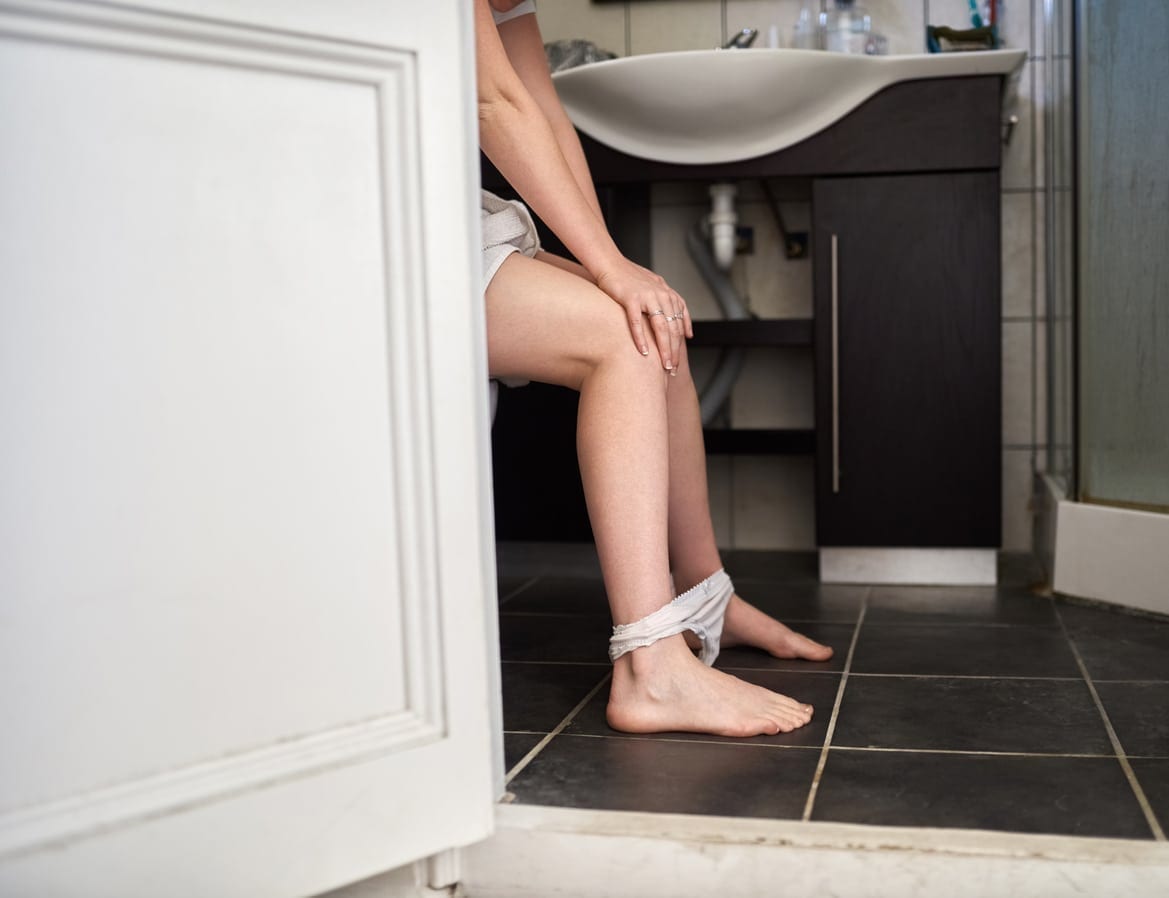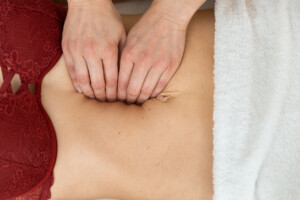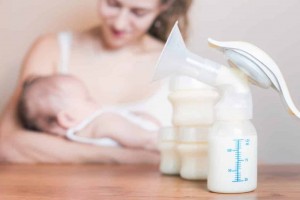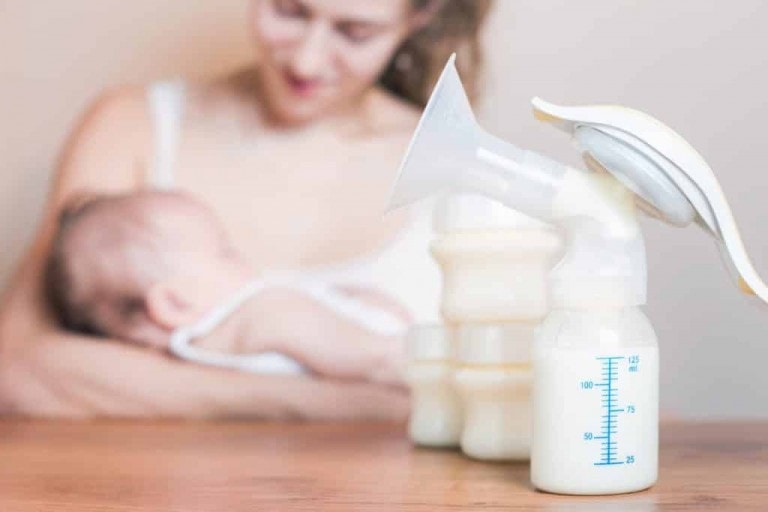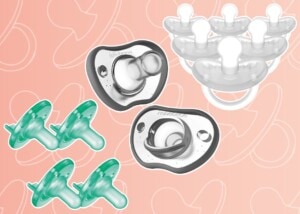After I delivered my first daughter, I could barely sit. I had second-degree tearing from birth and had many stitches in place. It burned when I peed. My whole bottom ached so badly, and it felt like my insides were falling out of me. It hurt to laugh, walk, and use the bathroom. I cried and worried I would never feel normal again. I also wondered how I could best perform perineal care to soothe my pain and heal well.
Your perineum, the diamond-shaped area consisting of your urethra, vagina, and anus, is a particularly sensitive area both physically and emotionally.18 Injury to this area can be painful and upsetting. Fortunately, with good medical attention and home follow-up perineal care, you can feel like yourself again. Here, we will review vaginal tears from birth and how to help your perineal heal postpartum.
What Is a Perineal Tear?
A perineal tear refers to trauma that occurs to the female genitalia during a vaginal birth.1 Most commonly, the vagina tears toward the rectum, but a tear can extend from the vagina in any direction: toward the urethra, out to either side, or toward the rectum.1 These tears happen because the perineal tissue has not adequately stretched before the delivery of the baby’s head. The vaginal opening is too tight or small for the baby’s head to fit through, so a tear increases the diameter.1
Perineal tearing can occur spontaneously, meaning the vaginal tissue tears on its own as you push out the baby. Alternatively, a provider may perform an episiotomy or a small cut in the vaginal opening to help get the baby out faster or prevent a worse natural tear in a different location. Episiotomies are increasingly controversial.2
On average, women who have a vaginal birth have an 85% chance of experiencing a perineal tear. However, tearing is most common during first births, and the likelihood decreases with each birth.1 This held for me, as I did not experience any tearing with my second delivery.
In addition to varying in the direction of tearing, perineal tearing can vary in the depth of tissue it extends into.2
Degrees of Perineal Tearing
Perineal tearing is classified based on how deep the injury extends into the vaginal muscle and beyond. There are four degrees of tearing:2,19
- First-degree: Only the vaginal mucosa and perineal skin are involved in a first-degree tear, and the repair may or may not require stitches.
- Second-degree: A second-degree tear involves both the vaginal mucosa and perineal muscles. It requires stitches or surgery for repair.2
- Third-degree: Lacerations that involve the anal sphincter muscles are called a third-degree tear. Third-degree tears can be further classified into what percentage of the anal muscle is affected.1 These tears require surgical repair in the delivery room or operating room.2
- Fourth-degree: A fourth-degree tear extends from the vaginal skin through to the rectal epithelium. It requires advanced repair, usually in an operating room.1
If you had a vaginal tear during childbirth, you might wonder how long it takes to heal. Depending on the severity, most perineal tears significantly improve within two weeks. Any stitches for perineal tears typically dissolve by your first postpartum appointment at four to six weeks.3
After my first birth, my stitches did not dissolve by my six-week postpartum check-up, so my provider had to remove them. The thought of it was worse than the experience of it, but it was pretty painless! And once the stitches were gone, I started to feel much better. My provider suspected they were possibly causing some tugging that enhanced my pain and soreness.
Possible Complications Following a Vaginal Tear
Vaginal tearing can sometimes cause complications after giving birth, depending on the severity of the tear, the repairs completed, and the perineal care afterward. Some possible complications of perineal tearing include the following:
Infection
In one hospital audit of women who received stitches for their perineal tears during birth, 5%-11% developed an infection. Infection of a perineal tear is more common if a doctor performs an episiotomy, if your water is broken for a long time, or if you have an instrumental delivery with forceps or a vacuum.4
Symptoms of infection of a perineal tear include:4
- Perineal pain
- A reopening of the wound
- Purulent (pus-like) discharge.
Contact your provider immediately if you think you have a perineal tear infection.
Bleeding
It can be difficult to know the source of vaginal bleeding postpartum. Some amount of vaginal bleeding after birth is normal due to lochia or shedding of the remaining uterine lining.5 However, significant amounts of blood loss, whether from the uterus or a vaginal tear, can be concerning because you could be at risk for postpartum hemorrhage.6
Most of the time, once your perineal tear gets stitched, the bleeding will stop. If bleeding persists, your provider may pack the wound to apply pressure. If the bleeding still doesn’t stop, your provider may administer local medications to encourage your blood to clot at the site of the tear.7
If a large amount of blood accumulates within the vaginal or vulvar tissue, you could develop a hematoma or a collection of blood under the surface of the skin, similar to a bruise.8
Chronic Pain
Anywhere from 6.1% to 11.5% of women experience chronic pain after childbirth. One report showed that C-section mothers report less chronic pain than those who had vaginal births.9 Lingering perineal pain can depend on the degree of vaginal tearing as well as other factors, such as having an operative vaginal delivery with forceps or a vacuum.9,10 Persistent vaginal pain can also contribute to painful intercourse when you resume having sex postpartum.11
Incontinence
Damage to the pelvic, vaginal, and rectal muscles can sometimes lead to incontinence. This means it is possible to leak urine, stool, or gas after experiencing vaginal tearing during birth.11 Pelvic floor physical therapy can help regain control of these muscles after perineal damage.15,20
Scar Tissue
Most of the time, once your vaginal tears heal, they are completely gone and will not cause any more issues. However, you can develop scar tissue.11 Scar tissue can also be called granulation tissue, which means the wound “over-heals.” It can become swollen or red and may bleed. Usually, this resolves independently, but if you are experiencing difficulty with granulation tissue, you should seek evaluation by your medical provider.12,21
Perineal Care at Home
Besides caring for your baby, you must care for your body, particularly your bottom. From managing pain and cleansing to voiding and stooling, here are some tips for taking care of your perineum postpartum:
Hygiene
Keep your bottom as clean and dry as possible. You will likely experience lochia, or bleeding and discharge from the vagina, for four to six weeks postpartum. Wear a pad during this time, and change it often. Do not use a tampon, a menstrual cup, or anything else to “catch” this blood and discharge, as this can cause infection or further damage to your vagina.13

You can clean the outer vulva with mild soap and water in the shower. Do not put any cleaning products inside the vagina, and avoid using anything abrasive or heavily scented.16
When you change your pad or use the bathroom, apply a witch hazel pad or gel to the sore or stinging area. This may help relieve burning in the area. You can also use an ice pack.14
Urinating
In my experience, urine can cause stinging and burning to vaginal tears while they are fresh. One of my postpartum nurses taught me to spray warm water from a squeeze bottle at the vagina while passing urine. This dilutes the urine and lessens the burning sensation.14
Bowel Movements
Bowel movements can be difficult to pass in the early postpartum days and weeks. Avoid bearing down too hard in an attempt to pass stool. This can cause hemorrhoids and increase perineal muscular pain and soreness. Keep your bowel movements soft and frequent by increasing fluid and fiber intake. You can also talk to your provider about whether a stool softener might be helpful for you.14
After a bowel movement, avoid aggressively wiping. Instead, consider rinsing the area with a perineal spray bottle or briefly dunking in a sitz bath. A sitz bath is a shallow bath that sits atop the toilet opening. It allows just your perineum to soak for a few minutes. This can relieve pain and help with cleansing.14
Pain
You are probably wondering how to relieve pain from vaginal tearing and stitches. Avoid sitting in the same position for long periods (easier said than done with around-the-clock nursing and holding a newborn!), and avoid sitting or putting pressure directly on your perineal wounds. Consider sitting on a soft, padded cushion or pillow, or even a donut-shaped pillow, to relieve pressure on the area.14

Talk to your provider about the use of medications and ointments for pain postpartum. Some people experience relief from muscle soreness by taking ibuprofen. Others like to apply a numbing spray, and some use hemorrhoid cream.14
Weakness and Incontinence
If you are experiencing pelvic floor weakness, pain, or incontinence, consider doing Kegel exercises to retrain and strengthen your muscles. To perform a Kegel, pretend you are clenching your vagina around a marble and lifting it. Hold for three seconds or as long as possible, then release and repeat 10 to 15 times. You can do a set of Kegels multiple times throughout the day.14
Products To Help With Your Perineal Care
When preparing to care for your perineum at home, there are some supplies and medications that may be helpful to have on hand. From ways to manage postpartum vaginal bleeding to tools that help with pain and cleansing, here are some items that may help with perineal care postpartum.
Adult Diapers

Many women rave about wearing adult diapers like these for postpartum vaginal bleeding. I did not like the idea of taking off my pants every time I wanted to take off and put on a new diaper. I stuck with regular menstrual pads. You may want to have both on hand.
Pads

There is no doubt that you need postpartum pads for at-home perineal care, and you will go through many because you should change them frequently. My personal favorites were basic, unscented, wingless pads like these. You may already have a go-to brand or style; most will work fine.
Ice Packs

You will want to have absorbent pad-style ice packs to apply to your perineum to relieve pain from tearing and reduce swelling. My hospital sent me home with lots of extras. If your hospital does not supply excess ice packs, these are the ones I used. Some women prefer to make “padsicles” by applying witch hazel cooling gel and crushed ice to a pad and sticking it in the freezer.
Witch Hazel Pads

My hospital supplied me with a good supply of witch hazel pads, but I stocked up on these when I ran out. Witch hazel is thought to relieve pain and reduce inflammation in the perineum postpartum.17
Spray Bottle
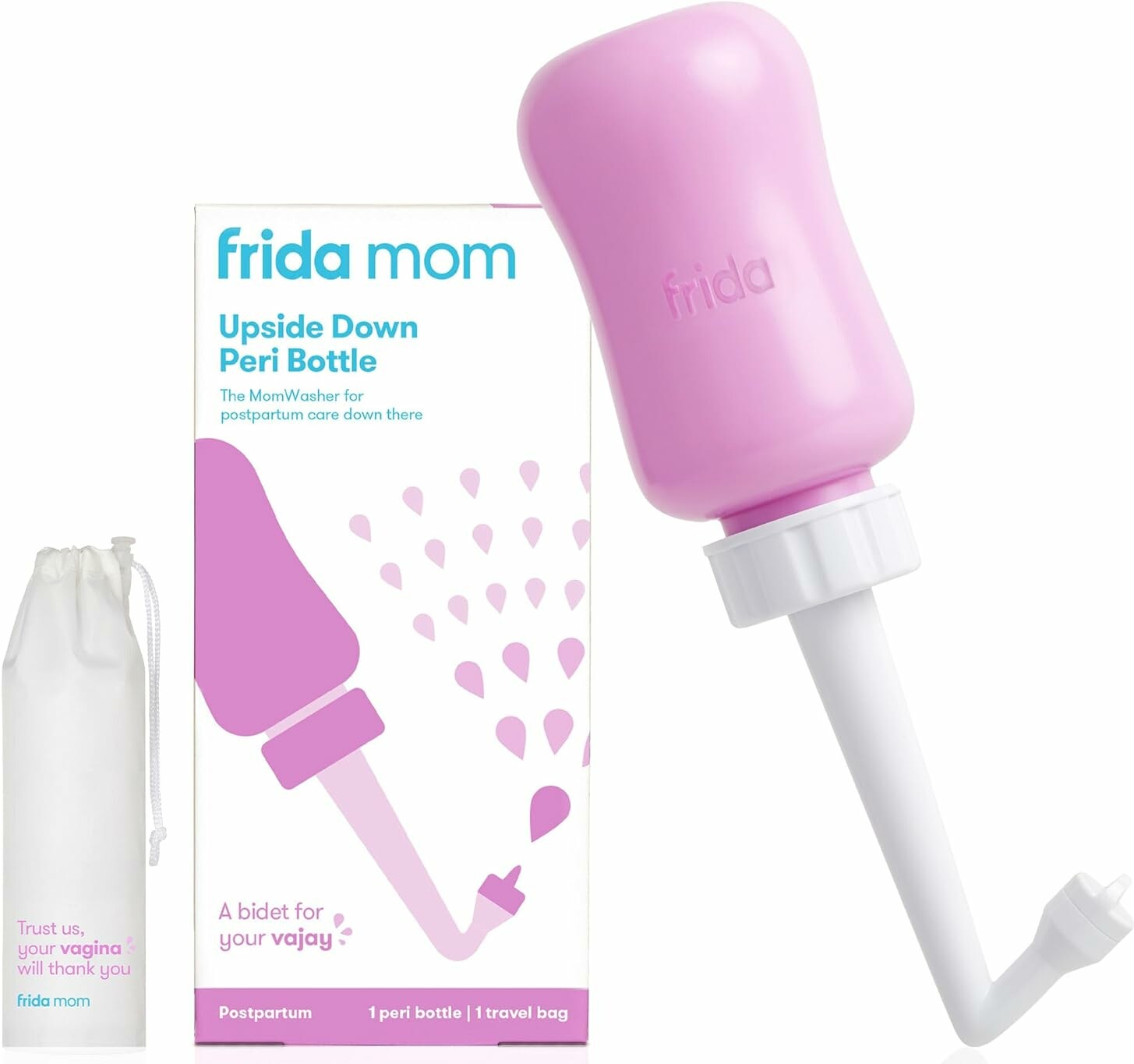
A perineal spray bottle can be useful as an alternative to wiping with toilet paper after using the bathroom. It can also help to spray water toward your vagina while urinating to relieve the burning caused by urine hitting your vaginal tears. This spray bottle is great because it can be used more easily upside down.
Sitz Bath


A sitz bath sits on top of your toilet seat and holds a shallow amount of water to soak your bottom after using the bathroom. It can help cleanse or relieve some swelling and pain related to perineal tears. You can also add Epsom salt or magnesium to your sitz bath to help relieve pain.
Perineal Spray

A close friend gifted me this Earth Mama Perineal Spray and Balm kit at my baby shower. I loved having it on hand postpartum, providing cooling relief to my second-degree tears.
Medications
In addition to the supplies you may want on hand for postpartum perineal care, there are some medications you may need and should have in advance. As always, talk to your provider before taking any medications, especially if you are breastfeeding.
Numbing Spray

Some women also like to use a medicated cooling and numbing spray containing benzocaine to relieve some of the pain and soreness from their stitches.
Stool Softeners

Different stool softeners and laxatives work for different people. My provider recommended Colace for me postpartum, and I took it a few times when I needed relief from postpartum constipation.
Hydrocortisone

If you experience hemorrhoids in addition to your perineal tearing, you may want to apply hydrocortisone cream to shrink them and relieve any pain or itching they are causing.
Ibuprofen

Ibuprofen is good to have on hand and works great to relieve pain and soreness related to perineal tearing. Check with your provider before taking it, as it can put you at greater risk for hemorrhage.
Dealing with vaginal tearing and performing perineal care can be daunting on top of taking care of a newborn. It is best to be prepared with supplies for perineal care in case you need them postpartum. It can feel like a lot of steps just to pee in the early postpartum days and weeks, but taking care of your perineum postpartum will soon become second nature and aid in healing, so you do not have to do all these extra steps for long!

